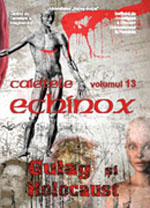Gulagul şi Holocaustul în conştiinţa românească – perspectiva unui editor de carte
The Gulag and the Holocaust in the Romanian Consciousness – the Perspective of a Book Editor
Author(s): Doina JelaSubject(s): History
Published by: Universitatea Babeş-Bolyai
Keywords: Amnesia and communism; hypermnesia and nazism; East – legitimation through anticommunism; West – legitimation through antinazism; responsibility; guilt; victimization
Summary/Abstract: In his 1998 book, Le Malheur du Siecle, Alain Besançon argues that Nazism is to be found in the European consciousness as « hypermnesia », whereas communism seems to be dealing with a reversed process, that of amnesia. A brief examination of the editorial activity, the institutions, public debates and the artistic phenomena (movies, books, theatric acts) proves that this holds true for Western Europe. For that part of Europe that used to be in the Soviet Block, the same brief examination proves to be the other way round. The explanations can be several and complex, but just a few of them would be: contemporary Europe, as public space, legitimates itself in various forms on the two different sides of the Iron Curtain. The public opinion-building discourse in the former Soviet space is built around the « myth » of anticommunist victory, while in Western Europe discourse is built around the « myth » of the victory against Nazism 50 years ago. In particular, if most of the population can identify with the status of victim / hero when remembering communism, when remembering Nazism they must usually admit responsibility or even guilt.
Journal: Caietele Echinox
- Issue Year: 2007
- Issue No: 13
- Page Range: 205-211
- Page Count: 7
- Language: Romanian
- Content File-PDF

